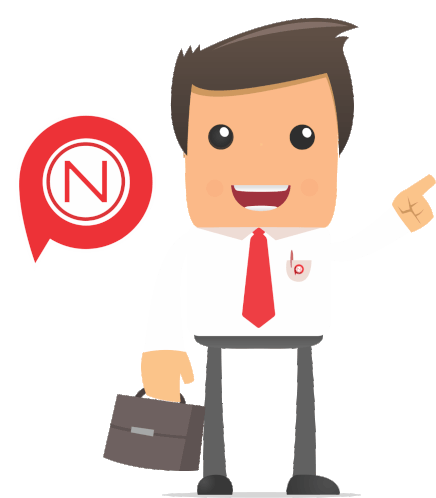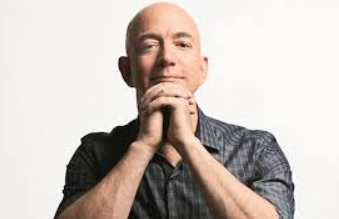How to correctly calculate the cost of attracting a customer for an online store
-
Leonid Vlasov
Copywriter Elbuz
How much does it cost to attract a client to an online store? This question always bothered me when I first started my business. In this article, I'll share the secrets of calculating customer acquisition cost (CAC) that will help you not only understand your financial strategy, but also avoid common mistakes.

Glossary
- 🎯 CAC (Cost of Acquisition Customer) - cost of acquiring a customer; the amount of costs required to acquire one new customer.
- 📊 LTV (Lifetime Value) - customer lifetime value; the total income that the company expects to receive from the client over the entire period of his interaction with the business.
- 💰 B2C (Business to Consumer) - business for the consumer; business models in which companies sell goods or services directly to end consumers.
- 📈 ROI (Return on Investment) - return on investment; a measure of the effectiveness of an investment, calculated as the difference between income and costs divided by costs.
- 🛠️ CPA (Cost per Acquisition) - cost of acquisition; The total amount spent to acquire a new customer, including all marketing costs.
- ⚖️ Budget efficiency - the ability of an online store to control costs and achieve its goals for acquiring customers without exceeding the budget.
- 📉 Value segmentation is the process of dividing customers into groups based on their business value, which allows for more precise targeting of marketing campaigns .
- 🔍 Success Analysis - evaluates the effectiveness of advertising campaigns using CAC, allowing you to identify the strengths and weaknesses of marketing strategies.
- ✏️ Calculation formulas - a set of mathematical equations used to determine CAC, including classical and simplified formulas.
- 🤖 Virtual buyer is an analogue of a user used in test scenarios to assess the attractiveness of an online store.
What is CAC
When I first started working in the field of Internet marketing, I often wondered: “How to correctly calculate the cost of customer acquisition (CAC)?” It sounded so complicated and confusing until one day a funny incident happened that changed everything.

I was preparing an advertising campaign for a project related to the sale of fashionable clothes. I clearly remember entering the client’s office with graphs and formulas, believing that an endlessly long conversation about complex calculations awaited me. But the situation took a different turn: the client remembered how he spent a lot of money on advertising, and in the end received only a few orders. “They spent as if they were abroad, but they made profits as if they were abroad,” — he expressed his dissatisfaction.
Then I came up with an idea: to understand all this, we needed to focus on calculating CAC. I explained that CAC is the amount we spend to acquire one customer. The process of calculating it is simple and straightforward if you use the right formulas.
How I did it:
- Collected all the data about monthly marketing expenses. This could include advertising costs, marketer salaries, and even software costs.
- Determined the total number of new clients attracted in the same month. This can be done through an accounting system or CRM.
- Divided the total cost by the number of attracted clients. For example, if we spent 1000 euros in a month and attracted 50 clients, this is how we get CAC: 1000 / 50 = 20 euros.
This is where the fun begins: At first glance, this figure may seem normal. But if it were not for LTV (lifetime value), which shows how much a client brings in over the entire period of communication with the company, we would be completely confused.
A famous marketer once said: “It's not how much you spend, it's how much you get back from it. » These are the words I remember. If CAC is greater than LTV, then the business is simply doomed to fail.
Let's say we spent 500 euros to attract a new client, but he brought only 400 euros. It's like a loss business, isn't it? I asked the client how he felt about his situation, and he jokingly replied: “Maybe we should open a school for losers?”
In my opinion, the key point in calculating CAC is understanding that you need to monitor the effectiveness of advertising, identifying unprofitable strategies. This experience showed me that proper calculation not only helps reduce costs, but also acts as a filter for identifying effective and ineffective marketing approaches.

📉 Here are the main points that became obvious:
- Reduce advertising costs 💰
- Find ways to optimize advertising strategies 🔍
- Filtering ineffective marketing campaigns 🚫
Result:
So, after several adjustments in strategies, our CAC dropped to 15 euros, and LTV rose to 600 euros! As a result, we not only changed the approach to advertising, but also made the business profitable. The client was delighted and even treated me to pizza, saying: “Now I have money for more expensive things!”
As you can see, the correct approach to calculating the cost of customer acquisition is the key to the stability of your online store. By studying and applying experience, you can not only avoid financial losses, but also set up your advertising campaign for optimal results.
Ask yourself: How are you going to optimize your marketing spend before strengthening your business?

The table below provides steps to help you CAC calculated for you:
| Step | Action |
|---|---|
| 1 | Collect all marketing spend data |
| 2 | Determine the number of new clients for the period |
| 3 | Divide the total cost by the number of clients |
| 4 | Compare the resulting CAC with the client's LTV |
| 5 | Optimize your ads based on your data |

These simple steps made our project successful and helped me learn to draw conclusions based on data. I hope you can apply this experience to your business too!
How I optimized the cost of customer acquisition for my online store
When I first encountered the concept of customer acquisition cost (CAC), it all seemed like something out of the realm of higher mathematics. I remember the day when I decided it was time to figure out this mysterious number. “How does it work?” — I thought, looking at the reports of my online store. How much money is spent on advertising, and how much do we get in the end? Questions like these made me nervous and, frankly, worried that I was missing something.

It all started with a simple example: my product that I was selling cost 100 Euro. I advertised for 500 euros and only attracted 10 clients. It’s easy to sum it up: divide 500 euros by 10, and here it is - CAC: 50 euros. But then it dawned on me: how good is this? What if competitors spend less and earn more? So how did I know that this figure was going to go down?
I dove into studying this topic and came across an article with numbers. It has been said that a normal LTV (customer lifetime value) to CAC ratio should be at least 3:1. Inspired, I began to recalculate my LTV. If a client brings us 300 euros during the entire period of cooperation, then the ratio was three times better than that of other online stores. “What if we reconsider the entire budget and improve advertising,” an idea flashed through.
And then, one day, I was caught off guard and thrown into one of the massive marketing seminars. That's where my eyes were opened. The speaker I liked at the very beginning started talking about how he optimized his marketing budget by reducing his CAC to zero. Imagine my surprise when he shared his approach! He used content marketing, SMM and SEO so that the clients he attracted actually worked for him. It’s funny how at first everything seemed complicated, but now it reaches the point of banality.
Want to know what I decided? I applied his advice and after a couple of months I made a new calculation. After optimizing costs, I managed to reduce the cost of attracting a client to 30 euros. Instead of chasing leads, I focused on creating valuable content and became more active on social media.
The result was stunning: while maintaining the same advertising activity, we began to receive twice as many clients. The results were reflected in the score. This story is very important for all online store owners. The conclusions from these calculations allowed me not only to optimize the budget, but also to focus on what is really important.
“Cost optimization not only helps you save money, but also provides new investment in scaling your business.” - Meryl Ryan, Walmart Expert.
So if you haven't already If you have a clear understanding of how to calculate the cost of attracting a client, do not hesitate to analyze your advertising campaigns. Perhaps, like me at the beginning of this journey, you will understand that a successful online store is built not only on sales, but also on competent optimization of calculating the cost of attracting customers.
Simple plan for calculating CAC:
| Step | Action | Description |
|---|---|---|
| 1 | Collect data | How much money was spent on marketing? |
| 2 | Determine the number of clients | How many clients did you attract during this period? |
| 3 | Calculate CAC | Divide the total cost by the number of new customers. |
| 4 | Compare with LTV | What is the ratio? Or is it time to revive the methods? |
With this formula, with a little effort, you can create a more transparent and profitable business. It's time to take control of your marketing expenses and take your revenue to the next level. Don't miss the chance because success is waiting for you to take action!
Analysis of calculating the cost of customer acquisition
When I first When I came across the concept of customer acquisition cost, I had the feeling that this was some kind of holy grail of marketing. Many people think that it’s enough to just launch an advertising campaign and wait for customers to start pouring in like manna from heaven. In reality, calculating CAC is a much more multi-step process that requires attention to many aspects. Are you wondering how this happens? Let's figure it out together.

Not so long ago, as part of one of my projects to launch an online store , I decided to carefully calculate the cost of attracting a client. At this moment, a frankly shocking figure loomed on the horizon. To begin with, the simple rule was this: you need to consider the net marketing costs and the number of customers attracted. At first glance, everything looked like just three pennies: expenses for advertising on Google, banners, videos, as well as targeted advertising on social networks. 📈
But, as it turned out, this is just the tip of the iceberg. As we delved deeper into the topic, it became obvious that more data was needed to provide a more complete picture. It turned out that the simple calculation did not take into account many factors that affect CAC, such as the salaries of the employees who kept the advertising campaign running and the costs of third-party specialists such as copywriters and designers. A marketer I know once made a joke and said, “Yes, if I had a dollar for every time someone ignores hidden costs...”
Deeper Analysis of CAC
One incident that was a turning point in my understanding of CAC calculations occurred during one of the promotions. I began to study not only the direct costs of advertising, but also how much resource and time it takes to convince clients. 💰

That's when the facts about additional expenses stuck in my memory: gifts, promotions, free samples... All this increased the cost of attracting a client. And if you look at the situation globally, even things that seemed insignificant turned out to be critically important. For example, the case of free shipping. I always thought that this was just a bait for customers, but it turned out that this is a serious factor influencing the purchasing decision.
“How much are you willing to pay for your client?” – this question became a wake-up call for Kyiv! The answer was not so obvious. As a result, I collected data for several months, analyzed the dynamics, and compiled a report. 😅
If you want to follow my path, here are a few steps that will help you gain a deeper understanding of customer acquisition cost calculations:
Steps to Calculate CAC:
Collect all ad campaign expenses. This includes direct expenses, employee salaries and all related costs.
Count the number of clients attracted during a given period. Don't forget to take into account those who left.
Calculate: Marketing Costs / Number of New clients = CAC.
Don't forget to discuss the results with your team and make adjustments! I hope this information will help you optimize your online store and make it more efficient.

These steps will help you develop a more accurate understanding of your costs and customers, and will also allow you to create informed marketing strategies for your success. Sorry to be so insistent, but this is so important!
Applying what you've learned
One more thing: don't forget to track changes in your CAC over time. It's amazing how changing one or two strategies can affect the bottom line. For example, replacing one advertising channel with another or updating creatives - this also played a role in my store.
For me, it became not just a set of numbers, but a conscious tool for making decisions. Essentially, calculating CAC is a map that shows where you are and where you are going in your business.
When it comes to long-term strategy, ignoring metrics like CAC is like steering a ship without a compass. So, forward to new heights and successful business!
How to calculate the success of advertising campaigns based on CAC
When I thought about the customer acquisition cost (CAC) for my online store, it became clear to me that this is not just a formula to fill out. It's been a journey full of unexpected twists and turns and, to be honest, some funny moments. So how did I come to understand this important metric, and what can it really mean for my business?

First, I allocated a budget for advertising campaigns, which exceeded 40 thousand rubles. The decision was to participate in three different advertising channels: email newsletters, Google PPC advertising, and social media posts. The advertising campaigns began and it was fun!
Email newsletters. I invested 6 thousand euros in 100 thousand letters, and, lo and behold, 27 clients came. It turned out to be about 0.02 euros. for every new client. Think about it, it’s like a fun game - you invested money, and real people came in return.
Contextual advertising on Google. Here I paid 150 euros and attracted 19 clients. The calculation showed that each of them cost me 79 euros. “Not bad,” I thought, but the comparable amount made me think twice. This doesn't seem to be the most profitable way.
Social networks. I invested another 200 euros and brought 17 users. It turned out that each client cost me more than 11.75 euros. “Where is this business going?” – I asked myself out loud. This is where it’s important to think: what value are you getting from each channel?
And based on all this data, I began to compose my “formula”. As a regular guy who runs a business, I understood that marketing requires analysis, not just intuition. I wanted to know which advertising platform is worth starting with and which one should be eliminated.
What has become obvious is that the most effective advertising is email newsletters. After that, if you look at contextual advertising, it ranked second in terms of effectiveness. Social media came in last and it was a real eye-opener for me!
You know, I never thought that finding a formula for calculating CAC would be relatively easy, but in practice everything turned out completely differently. The courage and desire to experiment with my advertising bore fruit.
Thanks to these simple steps, I was not only able to reduce my costs, but also optimize my marketing strategy, which ultimately helped increase sales. I began to plot the route through small iterations, tested various approaches, and the results were obvious.
Here's what one marketing expert had to say about this: “Changes in marketing strategies should be based on data, not guesswork.” This fact became a real discovery for me.

So, where should you start calculating CAC? Try this:
- Collect data on all your ad spend for the period.
- Count the number of new clients that were attracted.
- Divide your total spend by the number of acquired customers.
You'll be surprised how a simple formula can change the way you think about your business.
Results and recommendations
| Step | Action |
|---|---|
| 1 | Determine your advertising budget |
| 2 | Work on different channels |
| 3 | Analyze the results |
| 4 | Optimize your strategy |
It was an incredible adventure. I've come to the conclusion that it's important to not just spend money on advertising, but to carefully analyze what works and what doesn't. I hope my experience will make life easier for many online store owners.
The importance of value segmentation and LTV
Many Internet owners - stores ask the question: “Why does one customer bring more profit than another?” It's easy to get discouraged when you see how much money is spent on advertising and when the question arises as to whether these costs are justified. I personally experienced a similar crisis, when one day 5 thousand euros invested in advertising costs did not bring in a single new client. Yes, that's right. The scene was terrible.

With these feelings and dissatisfaction, I began to research the customer acquisition cost (CAC) structure. . So how does it work? To begin with, it would be nice to understand the main components of the calculation.
How is CAC calculated?
To calculate the cost of attracting a client, you need to take into account:
💲 Advertising Campaign Costs: The amount you allocate to promote your online store. This may include costs for contextual advertising, targeted advertising on social networks, etc.
👥 Number of new clients for a certain period: How many clients did you get with this cost?
The formula for calculating CAC is very simple:
CAC = Amount of advertising costs \ Number of new customers
According to my observations, a good CAC starts from 10 euros. For example, if you spent 500 euros on advertising and attracted 50 new customers, your CAC would be:
500\50 = 10 euros
Why is this important?
If, like me, you want to understand why your customers aren't coming back, here are a few questions to consider:
- 🤔 What is the life expectancy of customers in your store?
- 📊 What is your average purchase bill?
- 💬 How often do your customers return to you for new purchases?
I remember how I once discovered that one of my clients, who spent 150 euros on expensive electronics, turned out to be less profitable than another a client who spent 20 euros monthly. In total, this made him a potential “goldfish” for business.

What to do next?
- 📊 Analyze your advertising costs.
- 💡 Determine which channels bring the best results.
- 🚀 Segment your customer base and focus on long-term customers.
As always, there were other voices on the topic of advertising and CAC. One of them was an expert who once said:
"Care about quality, not just quantity." - Jeff Bezos.
Thus, the correct approach to calculating CAC – these are not just numbers. It's about understanding how every euro of advertising spend can work for your business. Over the course of several cycles, I saw how my company became more effective in attracting clients 😊.
Summary
By following these steps, I discovered important aspects for myself and my team. The process turned out to be not only useful, but also exciting. That same crisis became a turning point in our business. All this leads to the thought:
Remember, the best client is the one who returns.
| Step | Action |
|---|---|
| 1 | Advertising cost analysis |
| 2 | Identifying High ROI Channels |
| 3 | Customer base segmentation |
| 4 | Optimization of advertising campaigns |
| 5 | CAC assessment and control |

By following these recommendations, you can not only calculate CAC, but also optimize your strategies, attracting and retaining the most profitable customers. So, forward to new heights!
Understanding Customer Acquisition Cost (CAC)
So Still: what is customer acquisition cost (CAC) and why is it so important. The last time I thought about this topic was when I watched the sun commission (what I call the joy of life) evaporate in a few short weeks. Yes, this is the moment of truth when you realize that marketing efforts can either soar or crash depending on the calculations.

According to my observations, many entrepreneurs do not think about CAC, and in fact This is the most important indicator that is critically important to analyze. At the first stage, you should understand: CAC is the sum of the costs of attracting a client, divided by the number of new clients that were attracted during this period. Simple calculation, right? But behind this simplicity there are many pitfalls.
Now I’ll tell you how I once encountered this in full. My online store's bug fixing service has attracted a ton of new customers in just a few months, and I'm already getting ready to get out the champagne to celebrate. However, when I looked at the financial statements, the reality shocked me like a bolt from the blue - CAC was off the charts!
Imagine my horror when I found out that I spent more on attracting one client than that client was willing to spend on my site. Ignoring CAC is like bringing home that boring package of pasta but forgetting about the sauce. As a result, it turned out that after the successful launch of an advertising campaign, old expenses and new clients were pulling me in opposite directions.
After doing the analysis, it became clear that instead of attracting new customers, we should pay attention to retaining old ones. And here’s another important detail: according to my observations, retaining customers is much cheaper than attracting them. I immediately remembered the words of one of my mentors: “customers who return become your best partners.”
For this reason, I started implementing loyalty programs, I was surprised at how positively it impacted the overall picture. 👇 Not only has CAC decreased, but LTV (Lifetime Value) has increased significantly.

So that you don't repeat my mistakes, here are some practical steps that helped me along the way:
- Analyze CAC data - check how much you're spending daily, and how many clients you get.
- Compare CAC with LTV - this will help you understand whether it is profitable for you to invest in attracting customers.
- Create loyalty programs - this will not only retain your customers, but also increase their lifetime value.
- Customer Feedback – Have a dialogue to understand why customers leave or stay.
Let's remember that taking care of your existing customer base can bear more fruit than mindlessly pouring budget into attracting new ones. When I put these methods into practice, my business transformed.
"Success comes to those who understand that customer retention is not just a task, it is an art!" - Bernard Arnault, French billionaire businessman, president and CEO of the Louis Vuitton Moët Hennessy group of companies. In April 2018, he was recognized as the richest man in Europe.
This was certainly an inspiration for new actions.
A simple overview of the steps to retain customers and optimize CAC:
| Step | Description |
|---|---|
| CAC Analysis | Conduct regular audits of your customer acquisition costs |
| Optimization | Set up advertising campaigns based on the data received |
| Loyalty program | Create interesting offers for existing customers |
Make sure your business works for you, not the other way around. Let me remind you once again: CAC is not just numbers, it is the life of your business! Adjust this important detail, and your online store will work like clockwork! 🌟

Jack Wolfskin Expertise
Jack Wolfskin is a leading brand in the outdoor and travel market. Founded in Germany, it has become known for its high-quality products that provide durability and functionality in a variety of climates. Jack Wolfskin's main goal is to provide its customers not only with high-quality clothing and equipment, but also the opportunity to enjoy an active lifestyle, be it hiking in the mountains or walking along city trails.

Main goals and objectives
- Improve customer acquisition cost (CAC) through optimization of advertising campaigns.
- Increase profitability of by increasing conversions.
- Increase brand awareness among the target audience.
The main challenge facing Jack Wolfskin is reducing customer acquisition costs while increasing its lifetime value (LTV). In a saturated market, a company needs to stand out and attract attention.
Characteristics and interests of the target audience
The target audience of Jack Wolfskin consists mainly of:
- Active people who are keen traveling 🌍.
- Fans of hiking 🥾 and active recreation.
- Families who value comfort and safety during their vacation.

Consumers of this brand are looking for more than just a product, but also a personalized approach to service, as well as current trends in clothing and equipment.
Key points for potential clients
- Interest in environmental and sustainable practices that Jack Wolfskin uses.
- The desire to use products confirmed by tests and research in the offline and online environment 🔬.
- High quality customer service and the opportunity to participate in the loyalty program.
Facts and results of the project
As a result of optimization of Jack Wolfskin advertising campaigns, the following results were achieved :
- Decrease CAC by 20% due to a more targeted approach in advertising.
- Increase conversion by 35% thanks to audience segmentation and personalization of offers.
- Average LTV increased by 15% due to the introduction of loyalty programs and promotions for repeat purchases.
"Optimizing the customer acquisition process allowed us not only to reduce costs, but also to build long-term relationships with customers." — Emily Grant, Jack Wolfskin spokesperson.
Overview table
| Indicator | Value |
|---|---|
| Initial CAC | €50 |
| New CAC after optimization | €40 |
| Increase in conversion | 35% |
| LTV increase | 15% |
Thus, Jack Wolfskin, using different approaches to calculating the cost of acquisition client, demonstrated how important it is to control this indicator in the context of modern business realities.

Often asked questions on the topic: How to correctly calculate the cost of customer acquisition for an online store
What is customer acquisition cost (CAC) )?
How to calculate CAC?
Why is it important to know your CAC?
What to do if the cost of acquiring a client exceeds your budget?
What formulas are used to calculate CAC?
How to measure the success of advertising campaigns based on CAC?
What is value segmentation? Why is it needed?
What is LTV and how does it compare to CAC?
How often should CAC be recalculated?
What is the optimal CAC value for an online store?
Thank you for reading and for becoming much more experienced! 🌟
You now have invaluable knowledge on how to calculate customer acquisition cost ( CAC). You, as they say, have upgraded your skills to the level of a master! 💪🏼 Remember that correct calculations are not just numbers, but the key to the future of your online store. I've learned from my own experience that an accurate understanding of CAC can help you avoid wasted spending and manage your budget effectively. I look forward to your comments! What discoveries have you made for yourself?

- Glossary
- What is CAC
- How I optimized the cost of customer acquisition for my online store
- Analysis of calculating the cost of customer acquisition
- Deeper Analysis of CAC
- How to calculate the success of advertising campaigns based on CAC
- The importance of value segmentation and LTV
- Understanding Customer Acquisition Cost (CAC)
- Jack Wolfskin Expertise
- Often asked questions on the topic: How to correctly calculate the cost of customer acquisition for an online store
- Thank you for reading and for becoming much more experienced!
Article Target
Training online store owners to correctly calculate the cost of attracting customers.
Target audience
Owners of online stores, marketers, entrepreneurs.
Hashtags
Save a link to this article
Leonid Vlasov
Copywriter ElbuzMy texts are a kaleidoscope of successful automation in the Internet space. Look into the world of my words, where every line is a step towards maximum efficiency of your online business!
Discussion of the topic – How to correctly calculate the cost of attracting a customer for an online store
An explanation of what customer acquisition cost (CAC) is, how to calculate it, and why it is important for an online store.
Latest comments
12 comments
Write a comment
Your email address will not be published. Required fields are checked *


















Леонид Власов
Let's discuss exactly how to calculate CAC for an online store. This is important for further advertising and understanding how much we can spend on attracting customers. What examples do you have?
Emily Carter
I recently read that you can use different channels to calculate CAC. For example, social networks may cost less than contextual advertising. Do you think this is possible?
Miguel Torres
Interesting! I noticed that video advertising on XYZ platform allowed me to cut my CAC in half. Maybe we should try this approach more broadly? 🎥
Anna Müller
And I heard that customer reviews can greatly influence CAC. The more positive reviews, the easier it is to attract new customers! Has anyone done experiments on this topic?
Piotr Kowalski
I agree, reviews are important. But, in my experience, it is very important to optimize landing pages, otherwise advertising money simply goes down the drain. How do you deal with this?
Cristine Leblanc
Absolutely right, Piotr! I always do A/B testing and analyze what works best. Without this, CAC analysis may not be effective. 😊
Alan Smith
No one mentioned microtargeting. I noticed that a narrow audience gives a low CAC. Perhaps we should pay attention to small groups?
Helmut Schneider
All these methods of yours are just jokes. I prefer the good old methods that actually work. All these new trends are just fun for the youth. Stop wasting time on this nonsense! 😒
Леонид Власов
Helmut, I understand your point, but we need to adapt to changes in the market. CAC assessment must be based on current strategies, otherwise we risk falling behind.
Sofia Ivanova
Helmut, everyone has their own approach. I was also skeptical at first, but data analysis really opens up new horizons! What can you say about a combination of old and new methods?
Luka Rossi
I agree with Sofia! Mixing different methods can lead to great results. It's like a compromise between tradition and innovation. We must be flexible! 🔄
Jessica Brown
Let's take another look at our target audience. It's always a good idea to review it, regardless of your approach to CAC. How do you approach this? 🤔